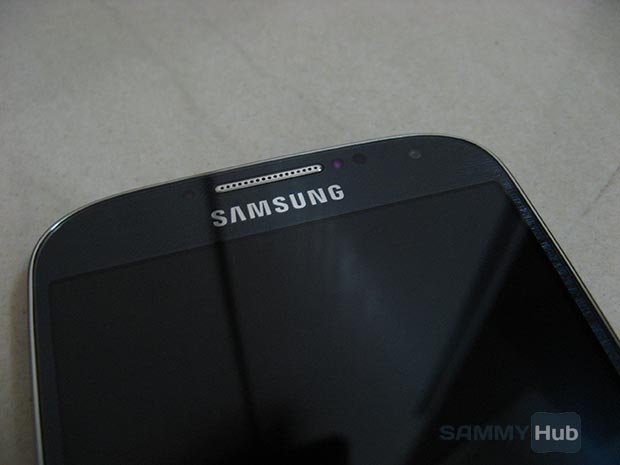
Samsung’s success in the smartphone market can be attributed to its flagship Galaxy S line. The first Galaxy S device came in 2010 and every year since then, Samsung has been following up with a faster and a better Galaxy S device. This year Samsung announced the Galaxy S4 and given the success of its previous best selling phone – Galaxy S III, the hype surrounding the phone was enormous. But does it live up to the hype? We take a look.
Design and Build Quality:
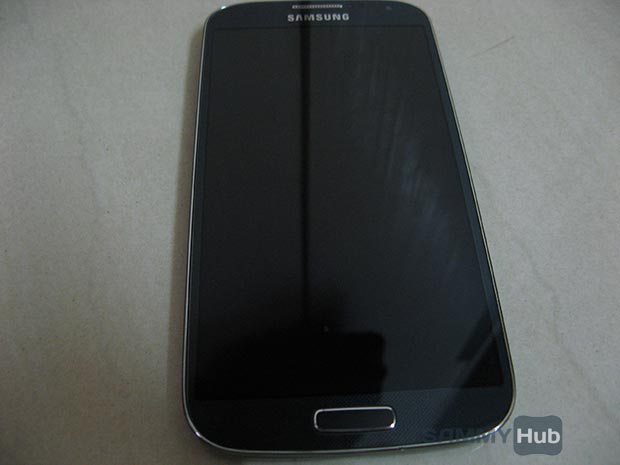

Galaxy S4’s design could be said as more of an evolution to the Galaxy S III and it wouldn’t be surprising if you mistook the device to be a Galaxy S III for the first time. However, there are little things that set it apart from the predecessor. For instance, Galaxy S4 has a slightly thinner bezel and is slimmer and lighter than the Galaxy S III. The Galaxy S4 measures 136.6×69.8 x7.9mm and weighs 130g compared to Galaxy S III’s 136.6×70.6×8.6mm dimensions and weight of 133g. The new Galaxy S device also sports a unique texture design with metallic finish sides.
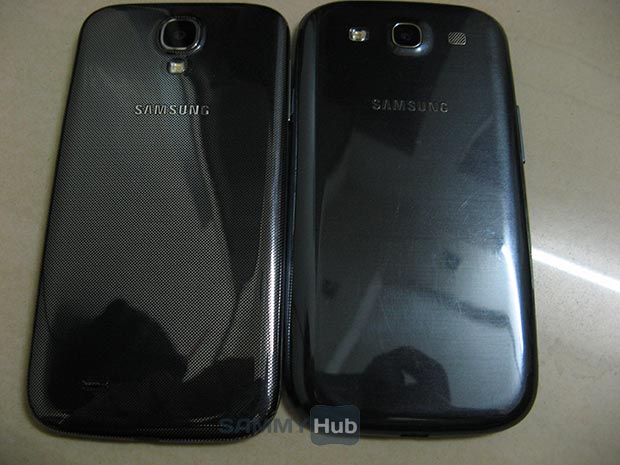
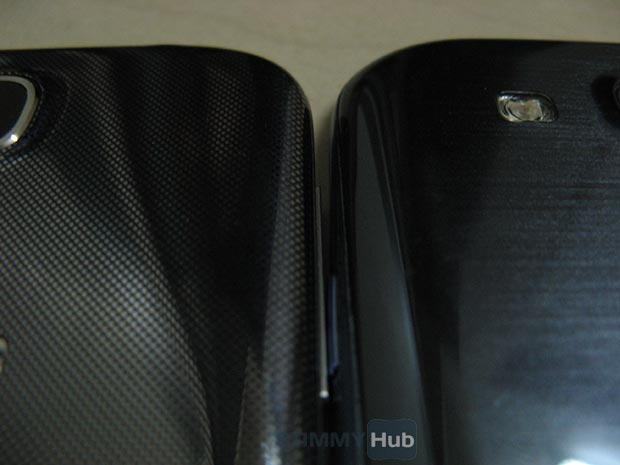
Speaking of placements, the front has a 5-inch display with a 2MP camera and variety of sensors and menu, physical home button on the front; volume rocker on the left hand side; power/lock on the right; microUSB port in the bottom and a 3.5mm headphone jack and IR port at the top side. The back sports the 13MP main camera with LED flash and loudspeaker.
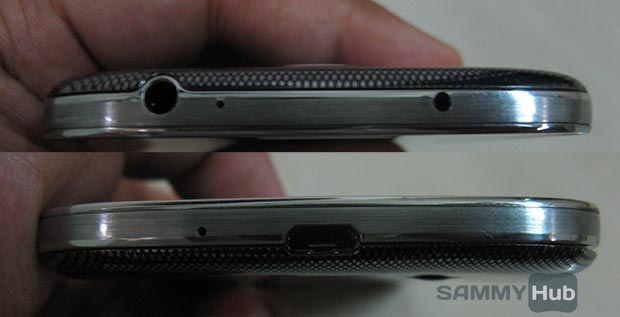
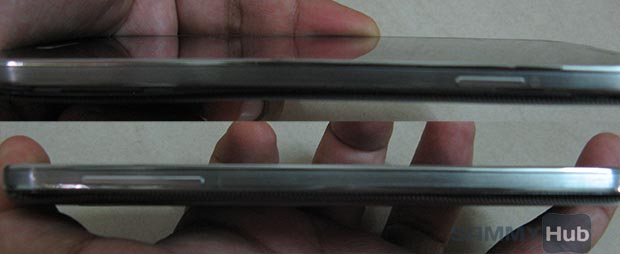
Galaxy S4 is a premium offering from Samsung and we frankly expected Samsung to match it with the competition. Samsung went with the plastic enclosure again, which unsurprisingly, doesn’t look as shiny as a metallic phone. But in retrospect, the plastic body makes the phone feel lighter yet feels really sturdy in the hands.
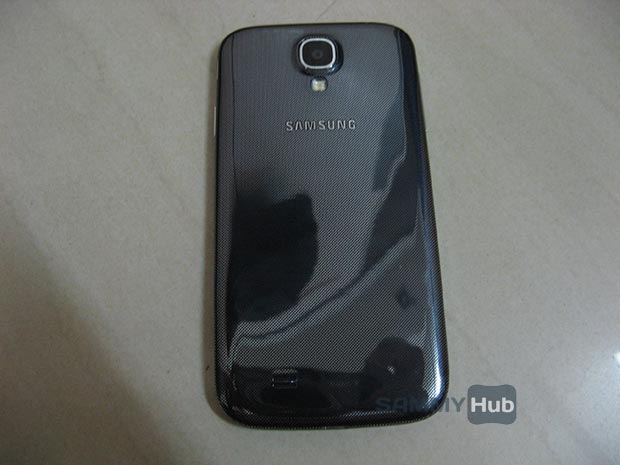
Hardware and Performance:
The biggest changes in the Galaxy S4 hardware when you compare it with the predecessor are the processor, display and camera. The Galaxy S4 (I9500) that is being sold in India and few other markets is powered by Samsung’s own Exynos 5 Octa processor that boasts four 1.6GHz Cortex-A15 and four 1.2GHz Cortex-A7. Although the phone is marketed as having eight cores, which is in a way, correct, the phone seems to take advantage of four cores at one time. In short, for intensive tasks, the Galaxy S4 will use the higher-clocked A15 processor while for less intensive task; it automatically switches to A7 cores to prolong battery life.
The Galaxy S4 now features a 5-inch Full HD Super AMOLED display (1920×1080) that achieves a pixel density of 441ppi. The display is one of the best you’d find on a smartphone these days. The display offers great viewing angle, good colour contrast and reproduction. In fact, Galaxy S4’s display has been certified by Underwriters Laboratories for its excellent display image quality.
We’ll talk about the camera in a bit but the rear-facing camera features a 13MP sensor while the front is a 2MP one.
So what about the performance? The Exynos 5 Octa with 2GB RAM is really fast in most operations and to prove its point, here are some synthetic benchmarks.
Software:
Samsung has integrated lots of software features to distinguish it from its competitors. The phone comes with Android 4.2.2 out of the box and runs the latest version of TouchWiz UI. Samsung has changed quite a few things, which includes an improved lockscreen, more options in the notification panel, tabbed settings menu.
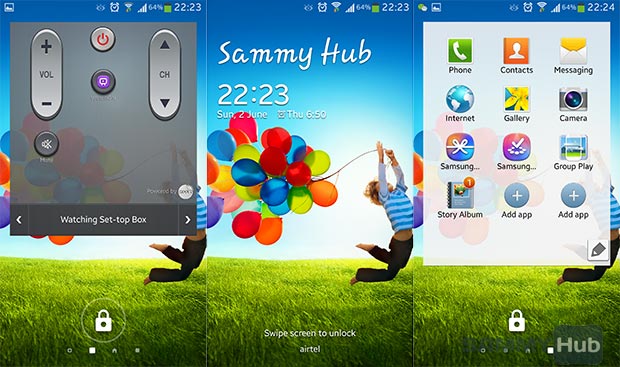
The lockscreen allows users to edit the name and Samsung has added the lens flare effect to unlock the phone, in addition to the ripple effect that was introduced with the Galaxy S III. Additionally, lockscreen can have multiple panes for variety of different widgets.

The notification panel now shows a lot of options when you scroll horizontally but if it proves to be cumbersome, a two finger swipe downwards will reveal all the notification panel icons, making it easy for users to activate or deactivate a feature quickly.
The settings menu now has a tabbed interface that enables quick access to settings and features of the device.
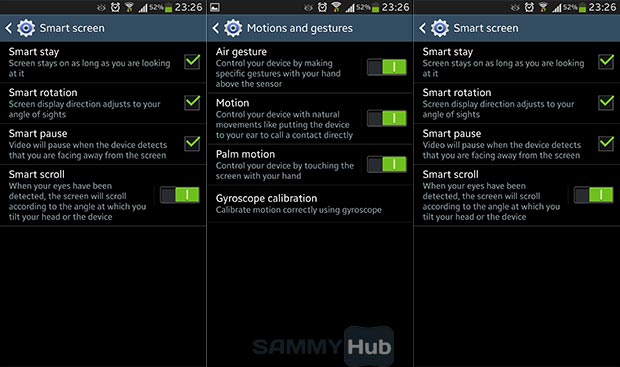
The Smart Scroll and Smart Pause are basically the highlight of the Galaxy S4. These features take advantage of the front-facing camera and help users to scroll the webpages or emails by just tilting the head or tilting the device. The Smart Pause on the other hand, pauses a playing video when it detects the user’s eyes are not facing the phone, thus pausing and playing the video.
Now, in our use, both these features fared with a mixed success rate. While sometimes, these worked flawlessly, other times it would just fail to execute anything even if we tilted our heads or faced in another direction while watching a video. Samsung says the features won’t work in case of inadequate lighting situation or the camera failing to detect the eyes, which could be the latter in our case.
Air View was introduced in the Galaxy Note II that put use of the device’s S Pen. But with Galaxy S4, Samsung has gone further by supporting the same functionality with fingers. User can now hover their finger over the screen to have a glimpse of the SMS or an email or even scan the gallery or video timeline without even touching the phone.
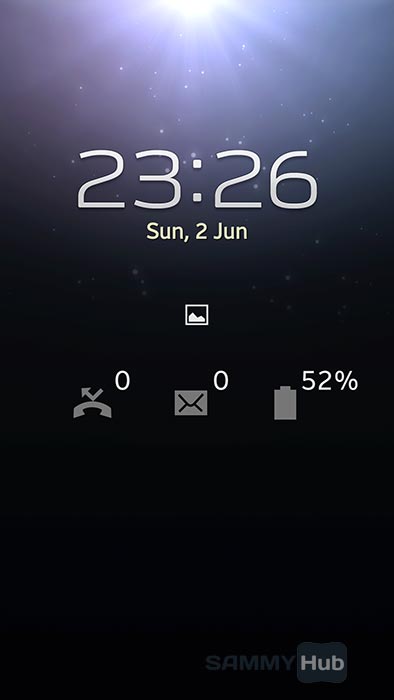
Air Gesture includes Quick Glance, Air browse, Air in-call accept. A quick glance of the hand over the phone will reveal miss calls, SMS or battery level while air browse will help users scroll the webpage up or down. In-call accept needs users to wave their hands few times to receive the call without touching the device. The received call can be automatically routed to a loudspeaker or can be conducted normally.
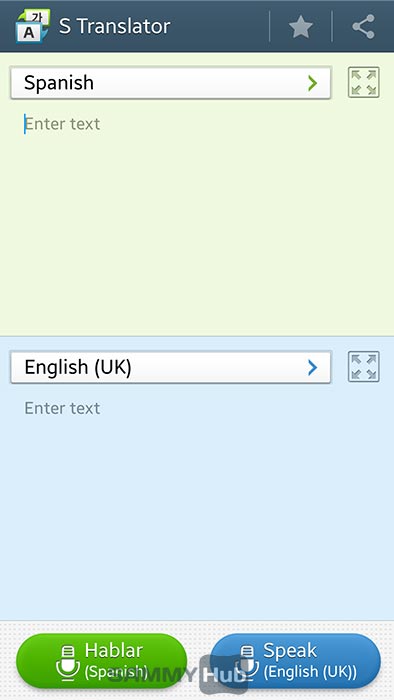
S Translator brings instant translation of different languages. It supports up to 9 languages and users can translate text or even voice with the app.
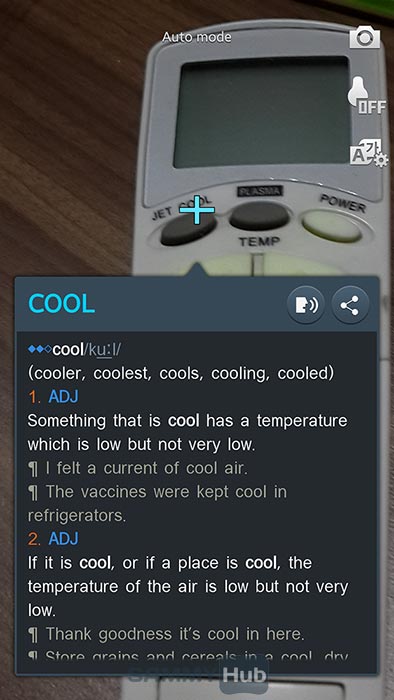
Optical Reader helps to recognise text, business card or a QR code and even displaying meanings of various words.
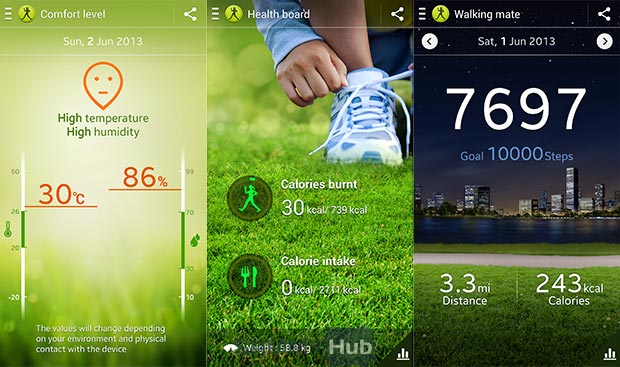
S Health is Samsung’s take to monitor the user’s health and helps to track the food intake, weight check and even a step counter to see how many steps a user walks daily. The S Health also features a comfort level check, which with the help of the integrated sensor detects the surrounding temperature.
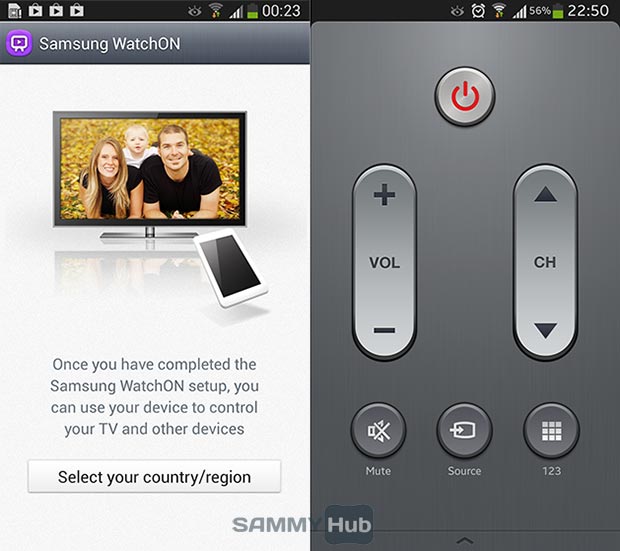
Samsung WatchON works in conjunction with the IR port that transforms the Galaxy S4 into a universal remote control. The WatchON app also brings in additional movie or show-related information but couldn’t make it work with the local TV we tested with.

Samsung also introduced Samsung Hub service which is just an aesthetic gateway to buying movies, music, apps and e-books from Samsung Apps.
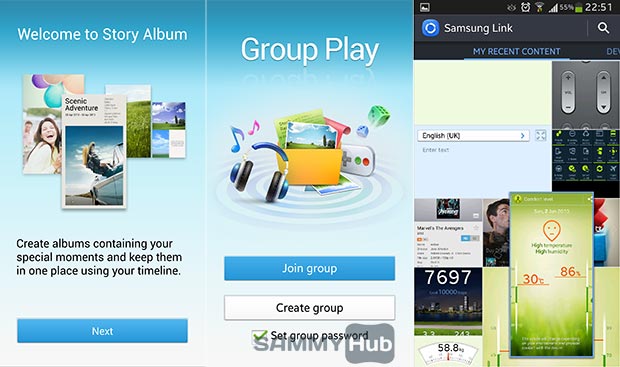
Group Play enables multimedia content sharing easier over Wi-Fi or mobile network. Users can share music, pictures and even documents.
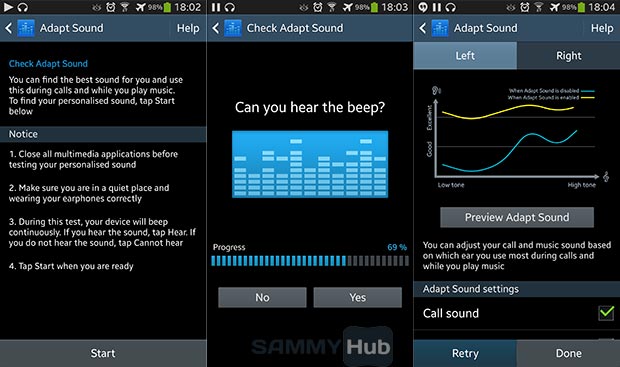
Rounding up the software feature set is Story Album that allows creating albums based on the captured photos timeline, an improved S Voice, S Travel which is a TripAdvisor widget and Adapt Display and optimises viewing settings for different apps while the Adapt Sound optimises the sound quality based on the setup given by the user.
Camera:
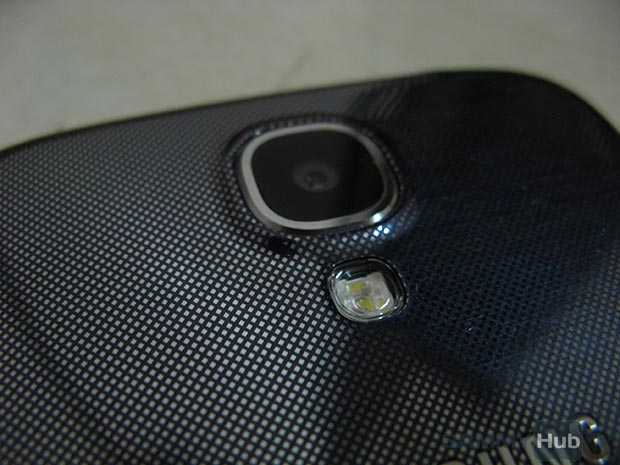
Samsung has expanded the camera resolution on the Galaxy S4 with a 13MP sensor compared to an 8MP found on the Galaxy S III. The user interface is somewhat similar to Galaxy devices but Samsung has improved a bit on that front. There’s a carousel or a quick grid view to select the number of camera modes.
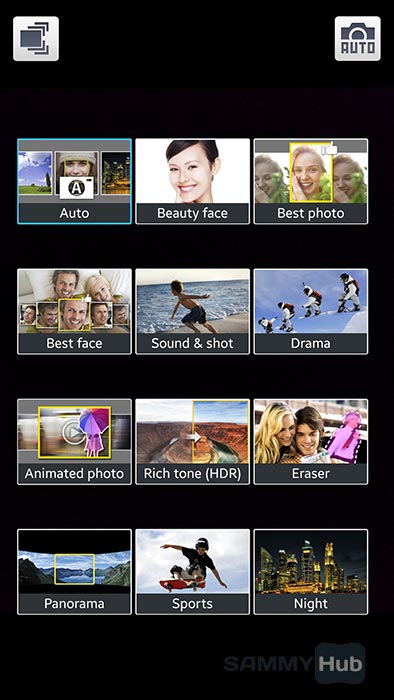
Some of the camera modes the phone supports – Dual Shot takes pictures from the front-facing camera and rear-facing camera at once, allowing to merge the image; Drama Shot creates a single shot in a time-lapse thus making it ideal to shoot fast action pictures; Sound & Shot as the name implies adds a sound to a particular image; Animated Photo creates an animated .gif image; Eraser shot removes unwanted objects from an image. Other modes include Night, HDR Panorama, Sports, Best Photo, Best Face, Burst shot, Beauty Face.
Although the interface is pretty decent, Samsung could work to emulate the speediness found on a phone like HTC One.
As for the quality, the output is pretty good. The photos feature low noise and good colour reproduction. Both cameras are capable of shooting 1080p videos.
 |
| Galaxy S4 (I9500) Sample Shots |
Battery Life:
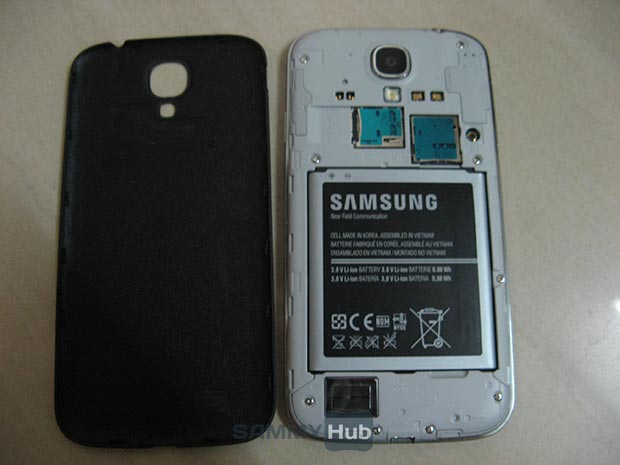
Galaxy S4 features a 2600mAh battery and it may have not reached the level of Galaxy Note II, the capacity is more than enough to give a day or a day and half’s worth of juice. This will of course vary on your actual usage.
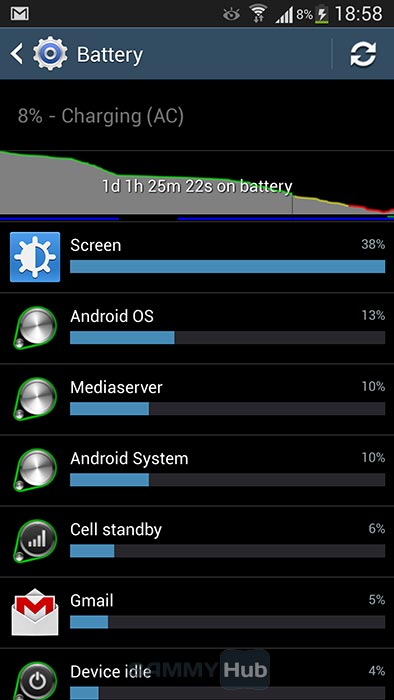
Conclusion:
Galaxy S4 is Samsung’s top-end offering and though it may not be a looker like HTC’s One, the phone packs a punch. It beats HTC’s device on many fronts when it comes to performance. But if you’ve been stuck in a Samsung hardware ecosystem, does it make sense to upgrade? Well, if you’re using the Galaxy S III or the Galaxy Note II, the leap may not be as much. Most software features, if not all, will eventually come to Samsung’s previous flagship device. But if you’re using a device like Galaxy S II or anything beneath it, the Galaxy S4 experience will feel like day and night.
And if you’re wondering what would be the fate of the original Galaxy S4 when Samsung just announced a number of devices in the Galaxy S4 family. Well, to put it simply, there’s a reason why those devices are a part of the Galaxy S4 and not a new series or a device. The original Galaxy S4 is here to stay for quite some time and the Galaxy S4 Active that comes close to the original variant won’t be available in as many markets as the Galaxy S4 and the Galaxy S4 LTE-A won’t expand outside Korea for few months.
Galaxy S4 (I9500) retails in India for Rs. 39,500.
PS: Want to win the Galaxy S4 (I9500) variant? You can enter here [India only]

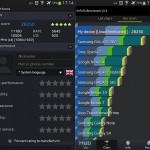

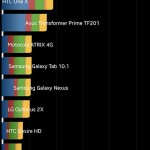
Leave a Reply